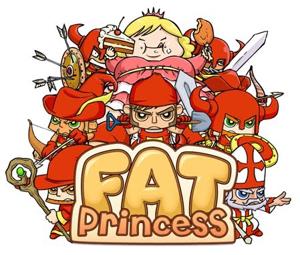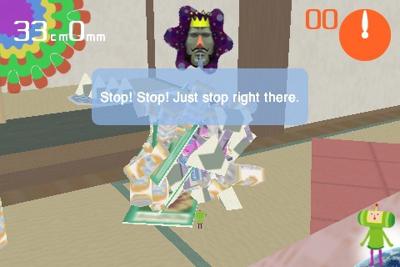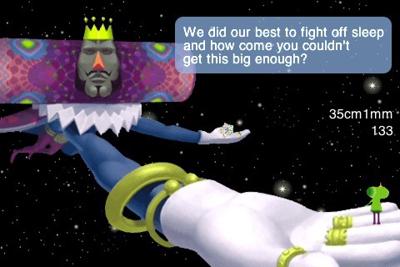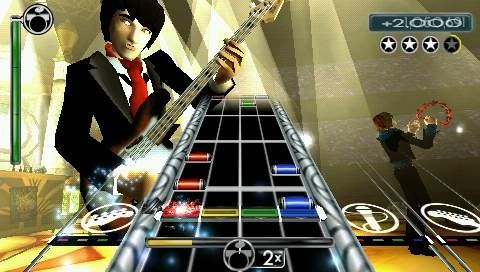Why Your Demo Sucks: Design Errors and Cognitive Dissonance
Like the pre-order metagame and the trophy/achievement metagame, demos are part of the less-evolved fringes of game design. Which is odd considering how long we’ve had demos in one form or another. Shareware has been around since at least the eighties. But not every developer made use of it, and only now with the latest console generation has heightened internet access resulted in widespread freely-available demos for consoles. We are still figuring out how to design games, but we are even more in the dark about how to design demos.
In fact, it’s not even entirely clear that we should design demos. Research on Xbox 360 and PlayStation 3 games suggests developers are better off not making demos at all, and should just make trailers instead. It’s not clear, however - there are many confounding variables here.
“If you have a crappy game and you release a crappy demo, it’s going to hurt you. And if you have a game with a $100 million marketing budget, you probably don’t need to release a demo. What our evidence showed us was, if you only have an average game and an average marketing budget, putting out a demo that’s bad is going to hurt you even more than [if it] were a triple A title [where] marketing might make up for it."
—Gregory Short, as quoted in Researchers Who Said Games Shouldn’t Have Demos Defend Their Findings

In November 2009, Nintendo finally began offering demos for some WiiWare games. The result? Increased sales for all games with demos.
In the absence of controlled experiments, the causality is ambiguous and there is room for debate. But clearly there are at least some cases where demos increase sales. It’s not surprising that gamers would be reluctant to spend their money on something about which they know nothing at all - especially in the case of downloaded games, which cannot be returned, given away, sold or traded. Demos can shed light on these obscure games and provide an actual reason to buy. Consequently, it’s very important that a reason to buy is what the demo actually gives. The problem is that it’s much, much easier to give a reason not to buy.
The player is not invested in a demo the way they are in a game that they’ve bought. Once a player has committed to a game by putting down some money, they want to enjoy the game. Cognitive dissonance pushes the player to work fairly hard to find the fun, in order to justify the expense of acquiring the game in the first place.
With a demo, the player’s approach is evaluative instead of cooperative. They are taking the game for a test drive. The mindset is not “Let me find the fun,” but rather, “Is there any fun here?” If there are annoyances and obstacles in the way - even ones forgivable in a purchased game - the player may well decide it’s not worth it and abandon the demo. This player certainly won’t be buying the game. The demo had better bring the fun directly to the player, because they sure don’t want to go looking for it.
In short, game design problems are magnified tremendously by simply being in a demo. Something that represents a minor stumbling block in a full game can kill a demo.

Someone who’s bought Fat Princess will probably want to know how to contribute to their team and beat their online opponents. There’s a good chance such a player will be willing to read all this text to reach that goal. But someone who’s just downloaded the demo to see if the gameplay is any fun is much more likely to see the wall of text as an obstacle not worth surmounting. An integrated tutorial that teaches the game more interactively would be much more effective than a reading assignment.
Some demos take it to the opposite extreme, telling the player little or nothing. Bionic Commando inexplicably puts the player into an online deathmatch instead of a tutorial level.
“Here’s a game with quite a complex control mechanism, but instead of using the demo to teach you that, they just drop you into a multiplayer match.
Which is leading many to install the demo, fire it up, and hate it. How are they meant to kill people when they don’t even know how to swing between buildings?"
—Luke Plunkett, Capcom Try To Fix Stupid Bionic Commando Demo
Puzzlegeddon, meanwhile, has the gall to tell the player that their goal is to defeat opponents, rather than provide a more useful objective like “match the colored blocks.” Demos should teach the player how to play - interactively and clearly.
Other demos throw up obstacles before the player can even enter the game. Gravity Crash is one of many that forces the player to scroll through and accept terms of use before they get to access the demo. Somewhat more subtly, many demos put the player through option menus, requiring they pick a game mode and/or a level. The demo player doesn’t need these options. They don’t need to know about the different game modes. The demo should just drop them into the most accessible game mode and let them see how it works. Diner Dash is problematic here - even worse for the fact that most of the options are disabled in the demo, but the player has to scroll through them and find the options that are actually available.
Even when the player gets right into the fun and knows what to do, the inclination to render demo experiences incomplete can lead to a few other major errors. My friend Izzie told me about her experience with the i Love Katamari demo on the iPhone. The demo presents a single level, asking the player to roll up as large a katamari as they can within two minutes. Despite herculean attempts, Izzie simply could not roll up a katamari large enough to satisfy the King.


Her katamaris were large enough to lag the iPhone, but the King remained stolidly unimpressed. Try as she might, Izzie just couldn’t beat the demo. And if she couldn’t pass muster on this sample level… why bother buying the full game?
The problem is that the demo is actually unbeatable. No matter how large the katamari, the king tells the player that they have failed. How many prospective buyers did this fact turn away?
“After a couple of games I was rolling around like nobody’s business and even managed to get a katamari of over 25cm, which was brilliant - for me. I’ve no idea if that’s actually any good or not, though. There’s no goal set and the King wasn’t impressed - but is he ever? It would be nice for some better feedback from the demo. I’m not buying the full game if I don’t know if I’ll be able to complete any levels."
—Owen Allaway, i Love Katamari Lite (iPhone)
A demo should not make the player feel that they have no hope of mastering the game. It should provide a taste of success - let the player feel good, and want more. Let them complete one challenge, and want to try others.
Rock Band Unplugged is a PSP adaptation of the Rock Band franchise. Although the gameplay is different and doesn’t mimic instruments with as much fidelity, the premise is similar - timed button-presses accompanied by popular songs, with more songs available for paid download.

The demo presents three songs to choose from, while the full game comes with forty-one. So the player can try out the sample songs, and if they enjoy the gameplay, pick up the game and some DLC to expand the experience to some of their other beloved tunes. Unfortunately, the demo has a time limit. A couple of minutes into the song, but significantly before the ending, it simply cuts out, and does not grant the player the satisfaction of finishing.
The full game still presents the opportunity to experience the Rock Band Unplugged gameplay on a much wider variety of songs, but by disallowing the player from completing any song, the demo changes the emphasis. The value proposition is no longer “buy the game to have this fun experience with all your favorite songs!” but instead “buy the game to be able to finish this song you may not even care about.” This is much less attractive.
Some demos manage to avoid all these pitfalls, and a good demo can actually sell a bad game. Iron Man and Stranglehold were regrettable purchases I made on the strengths of their demos, which each deliver straight-up an early level of the game - but in both cases, it turned out to be the best level by a wide margin.
“What can one say about John Woo’s Stranglehold? We could say that the demo was awesome. We could also say that Midway should have just released the demo at retail and charged two bucks for it, rather than stretch it out into a full game and failing."
—Jim Sterling, John Woo wants to make another Stranglehold game
Virtua Tennis 3 and Bionic Commando: Rearmed managed to deliver in ways that the rest of their respective games could actually live up to - and prompted completely unregretted purchases on my part. Rearmed also went the provide-an-early-level route (with some extra humor injected), while Virtua Tennis lets the player set up exhibition matches with a subset of the selectable characters.
None of these demos deluge the player with options or required reading. They don’t put up obstacles or make the player feel inadequate. They just deliver a fun and accessible bite-sized chunk of gameplay that leaves the player hungering for more.
When it comes down to it, game demos are much like movie trailers, comic book covers, and book jacket blurbs: you can’t trust them one bit. But they still matter. They can still motivate sales if done right, and prevent them if done wrong. Even video games rarely get a second chance to make a first impression.